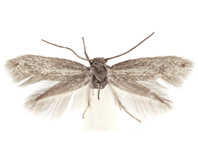Abstract
To date, only 16 species of the very diverse family Parastenocarididae have been reported from the Indian subcontinent. This paper gives an illustrated description of three new species, viz. Parastenocaris edakkal n. sp., Proserpinicaris corgosinhoi n. sp., and Proserpinicaris karanovici n. sp., and discusses their position in the respective genera. While the first two species were found sympatrically in the Edakkal Cave in Kerala State of southwestern India, the third one was collected from a farm bore in the riparian zone of the River Krishna in Andhra Pradesh State of southeastern India. The Palaearctic genus Proserpinicaris Jakobi, 1972 sensu Karanovic, Cho & Lee, 2012, is being reported for the first time from India. Parastenocaris edakkal n. sp. belongs to the brevipes-group of the genus Parastenocaris Kessler, 1913 sensu Lang, 1948 et Reid, 1995. It is chiefly characterized by the male leg 4 basal chitinous complex consisting of one large sclerotized plate together with two small accessory lobes, and one strong, hook-like spine at the inner distal corner, and the endopod is membranous and ventricose in outline, with bulbous proximal part drawn out distally into biserrulate, pointed structure. Proserpinicaris corgosinhoi n. sp. can be easily separated from its congeners, inter alia, by the short caudal rami (c.1.2–1.4 times as long as wide), bearing 2 unequal lateral setae (I, III) inserted proximally; male leg 3 proximal segment is stumpy and has one prominent tubular pore on proximal anterior surface; and leg 4 endopod is short, membranous and somewhat conical, and the hyaline structure is relatively large, foliaceous and lies rather close to endopod. Proserpinicaris karanovici n. sp. has its own unique set of characters, of which the following are noteworthy: the caudal rami in both sexes are about 2.6 times as long as wide, gradually tapering, with only 2 lateral setae inserted in proximal half; and the male leg 4 endopod is nearly as long as first exopodal segment, membranous, with lateral margins fringed with tiny spinules, and the hyaline structure is short, leaf-like and occurring close to, and overlapping, the endopod.

